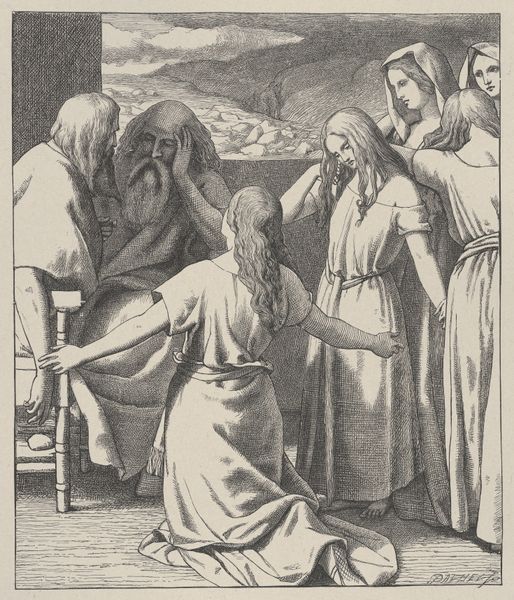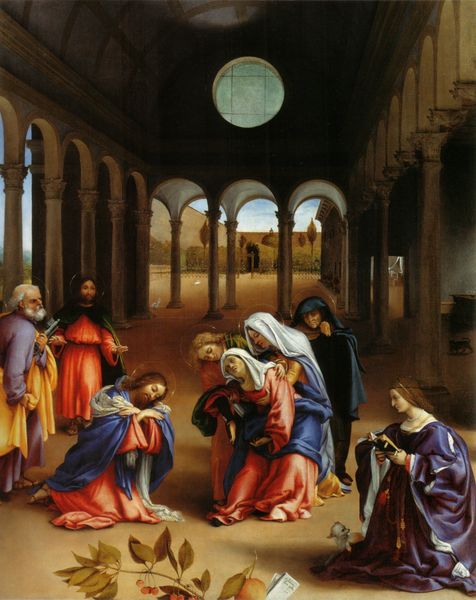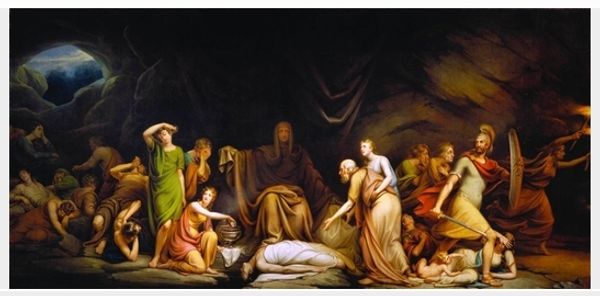
painting, oil-paint
#
portrait
#
baroque
#
dutch-golden-age
#
painting
#
oil-paint
#
figuration
#
oil painting
#
history-painting
#
realism
Dimensions: 55 x 43 cm
Copyright: Public domain
Editor: Here we have Rembrandt van Rijn’s "Presentation in the Temple," created in 1628 using oil on panel. The subdued palette and chiaroscuro create a deeply contemplative atmosphere. What strikes me is the intense focus on light. What do you see in this work? Curator: Indeed, the strategic use of light in "Presentation in the Temple" is crucial to its formal reading. Observe how light functions less as illumination and more as a structural element, carving out the scene’s focal point. Note how Rembrandt contrasts the figures in the foreground through carefully modulated textures and contrasting forms that capture the biblical theme within a dramatic setting. How does this structural application impact your interpretation? Editor: I think it directs my eye exactly where Rembrandt wants it, straight to the infant Jesus in the arms of Simeon. It isolates this tiny figure and amplifies the thematic resonance of the work. Curator: Precisely. Semiotically, light operates as a signifier. The light isn’t merely revealing form; it’s actively creating and defining significance. Furthermore, consider how the composition is structured. The arrangement isn't symmetrical, but notice how the strong vertical line of the column balances the clusters of figures on the left and right, reinforcing a sense of equilibrium. Editor: I see that now, the composition feels so balanced despite the uneven distribution of figures! It's incredible how much can be understood simply through analyzing its structure and use of light. Curator: Exactly. This method provides a solid base for further analysis. Editor: Well, thanks. This really shifted how I look at this painting and what constitutes its power! Curator: You’re most welcome! Reflecting on art is like learning to read a new language. It’s all about structure, signs, and careful interpretation.
Comments
No comments
Be the first to comment and join the conversation on the ultimate creative platform.













